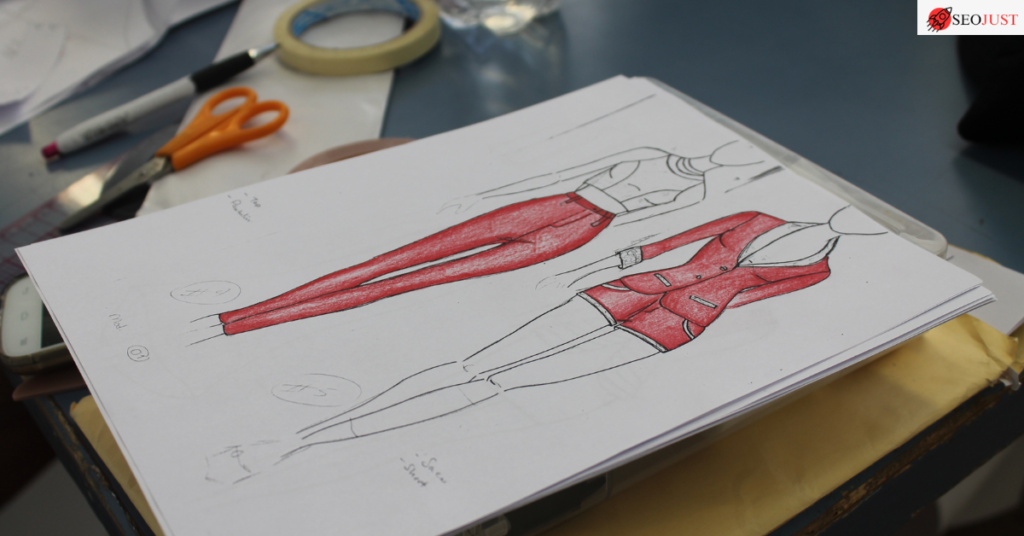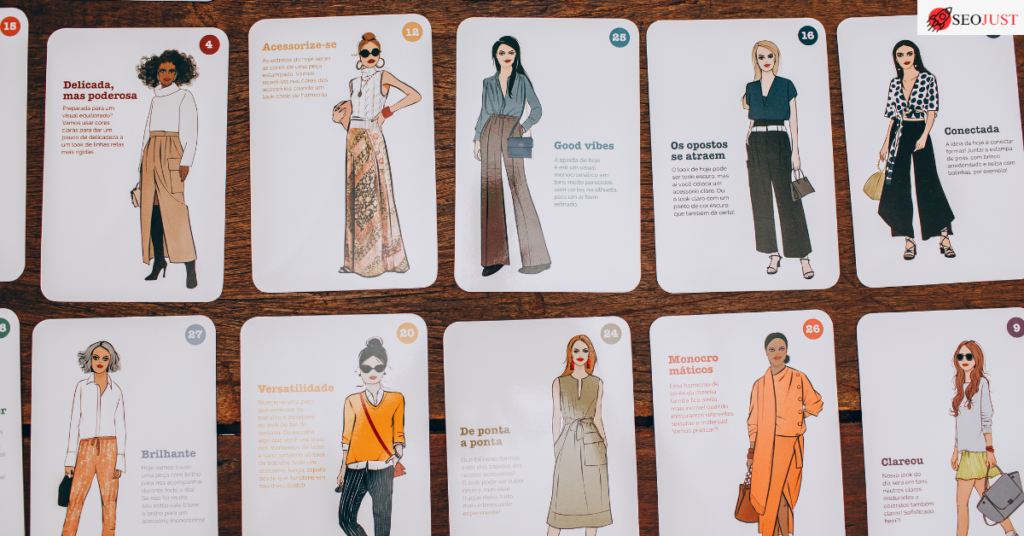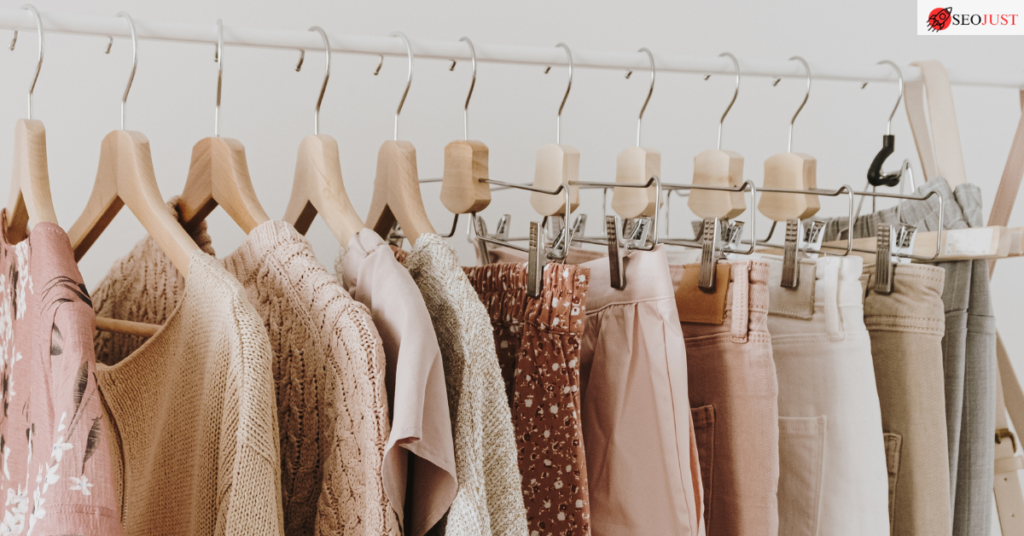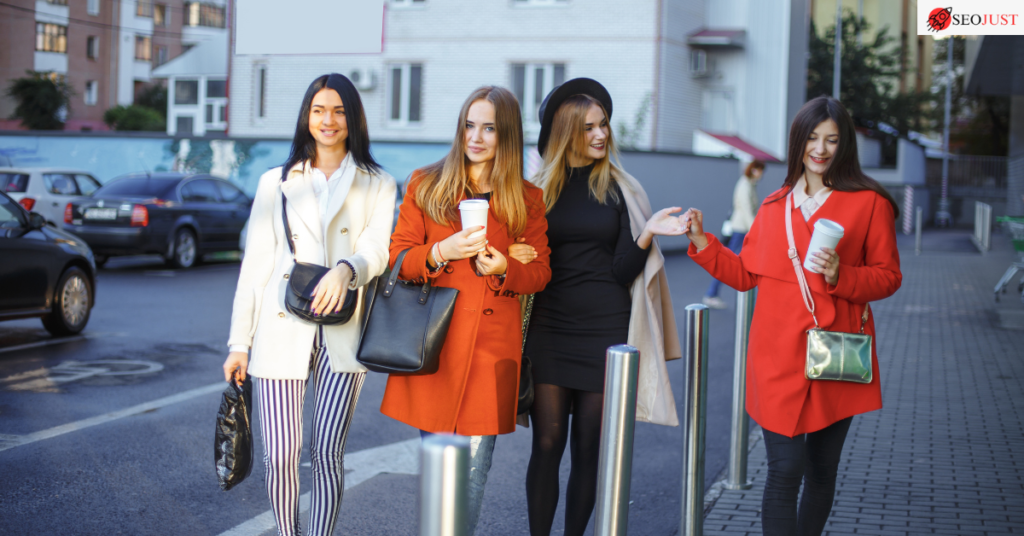Harajuku fashion, the craziest and most creative style on the streets of the district of the same name in Shibuya, Tokyo, is a perfect example of the clash between the young generation and the latest fashion trends. This characteristic style is not simply a form of clothing; it is a rebel’s spirit and a statement.
Read More: What is the Acubi Fashion Style
The Roots of Harajuku Fashion Tokyo
It is important to note that the roots of the Harajuku fashion can be seen from the post-war period, but its growth started in the 1980s.
This was when different youth subcultures started appearing in Harajuku, and they all came out with their own style statement and dressed up to the hilt, making the streets of Harajuku a walking fashion show. The area evolved into a melting pot of traditions, new-age life, and Western culture with traditional Japanese elements.
Harajuku fashion blends modern whimsy with traditional influences. Harajuku style is eclectic, vibrant, and perpetually evolving. Tokyo’s bustling streets pulse with diverse cultural expressions. Lolita fashion celebrates intricate detail and Victorian elegance. Decora bursts with bright colors and piled accessories.
Japanese fashion fuses cutting-edge innovation and meticulous craftsmanship. Lolita style features elegant dresses with complex patterns. Visual kei combines glam rock with extravagant fashion. Street fashion mirrors the dynamism of urban life. Gothic style embraces dark aesthetics and dramatic flair. Harajuku district: a hub for Japan’s youth fashion. Kawaii culture adores all things cute and lovable.
Read More: QXEFV – SEO JUST
Iconic Harajuku Styles | Lolita, Kawaii & Decora
Harajuku is home to a myriad of fashion subcultures, each with its own distinct characteristics:

- Lolita: This style is based on the Victorian and Rococo styles with ornate and childish-like dresses, ruffles and numerous embellishments.
- Gyaru: Gyaru is popular for flashy and over-the-top fashion, such as tanned skin and makeup, as well as beautiful, stylish hair.
- Visual Kei: Drawing influences from Japanese rock bands, the band was known for their showmanship, which included flamboyant costumes, makeup and big hair.
- Decora: This style is playful and bright and includes wearing many layers of clothes and accessories in the form of bright hair clips, jewelry, and toys.
- Ganguro: Boasting a tanned complexion, the opposite of the clothes’ makeup and pastel colors.
The Cultural Impact of Harajuku Fashion | Visual Kei
It is not just a place of fashion; it is a social reaction to society’s conformity and a place for the youth to be what they want to be. Fashion magazines such as FRUiTS have captured this lively culture since 1997 and presented the fashion trends of the district across the world.
Pop culture added to the spotlight on Harajuku fashion, especially through musicians like Gwen Stefani in the early 2000s, when she gained international attention for the style.

Gyaru fashion is known for its glamorous, bold looks. Goth culture celebrates the darkly mystical and arcane. Punk fashion stands for rebellious, DIY aesthetic principles. Traditional Japanese attire honors timeless elegance and formality. Fairy kei mixes pastels with dreamy, nostalgic elements. Pastel colors soften fashion with delicate, soothing hues. Hair clips in Harajuku often dazzle with creativity.
Shibuya is the beating heart of Tokyo fashion. Cosplay showcases detailed costumes from various fan cultures. Gothic Lolita fuses dark gothic and sweet Lolita elements. Subcultures in fashion express unique identities and beliefs. Wigs in Harajuku offer transformative, whimsical style changes. Kyary Pamyu Pamyu, icon of Harajuku kawaii pop. Self-expression in fashion is diverse, bold, and personal.
Read More: 1920s Mens Fashion Guide
Challenges and Evolution of Cosplay Gyaru
Harajuku has not been without its challenges, including the threat of commercialization, which has led to the evolution from small independent boutiques to big retail chains. This has raised concerns regarding the watered-down version of the real Harajuku culture. However, the district is still a fashion district that keeps evolving with new trends.
Kawaii culture influences fashion with adorable, joyful designs. Harajuku’s style landscape is vibrant and constantly evolving. Understanding Harajuku style involves exploring its eclectic subcultures. Each fashion style speaks to a personal aesthetic. Harajuku Station, gateway to Tokyo’s fashion paradise. Kei fashion includes diverse styles like gothic and visual. Lolita fashion showcases intricate elegance and youthful grace. Japanese street fashion is innovative, bold, and diverse.
Alternative fashion challenges norms with unique, bold designs. Harajuku fashion styles range wildly in expression and form. Mainstream fashion often draws inspiration from Harajuku trends. Popular styles in Harajuku evolve with global influences. Traditional Japanese fashion maintains its allure amid modern trends. Sweet lolita favors pastel tones and delicate fabrics. Each style brings a unique flair and identity. Early 2000s fashion trends often resurface with nostalgia.
Read More: The French Fashion Monogram Since 1962
From Traditional to Trendy: The Diversity of Japanese Fashion
Outlandish fashion often starts trends and breaks norms. Yoyogi Park offers a green escape near Harajuku. Laforet Harajuku, a cornerstone of local fashion culture. Pastel colors dominate in soft, dreamy fashion choices. Fashion trends in Harajuku shift with youthful energy. Japanese people embrace a range of diverse fashion styles. Bleached hair is a bold statement in street fashion.
Care bears inspire whimsical and nostalgic fashion items. Ganguro style features dark tans and contrasting makeup. Visual kei fashion emphasizes dramatic makeup and elaborate hairstyles. Alternative fashion consists of countless subcultures and styles. No need to adhere to any certain style. Although the style varies, Harajuku always surprises. Harajuku is also a cultural landmark beyond fashion.

The spirit of Harajuku thrives on fearless creativity. Everyone can create a style uniquely their own. Harajuku fashion also influences mainstream global trends. Gyaru style is bold, edgy, and extravagantly feminine. Kei clothing style varies from dark to playful. Harajuku encourages everyone to develop a unique style. Fashion still thrives on innovation and personal expression. Harajuku fashion items often become global trendsetters.
Read More: Fintechzoom Costco Stock: Trends and Predictions of 2024
Creative Self-Expression Through Harajuku’s Eclectic Fashion Scene
Harajuku hosts many different styles, each unique. The Harajuku aesthetic is colorful, diverse, and impactful. Goth style in Harajuku mixes elegance and darkness. Activities in Harajuku include shopping, dining, and people-watching. Harajuku’s popular street is a fashionista’s playground. Harajuku clothing often features bold, innovative designs. Styles in Harajuku fashion are diverse and influential.

Visual kei style merges music with dramatic fashion. Harajuku’s street food is as vibrant as its fashion. Plastic jewelry adds a playful touch to outfits. The districts of Tokyo each have their own vibe. Clothes and accessories in Harajuku push creative boundaries. “Little Pony” themes bring joy and color to fashion.
Shibuya district is a trendsetting hotspot in Tokyo. Platform shoes elevate style literally and figuratively. Trends come and go, but style is eternal. Styles include everything from punk to princess in Harajuku. The rules of Japanese fashion are there to break. Breaking rules and the pressure to conform is typical. It’s perfectly okay to dress uniquely in Harajuku. The streets of Tokyo are a runway for everyday life.
Read More: Top 16 Webtoon XYZ Alternatives & Competitors
Harajuku Today
Today, Harajuku remains a center of youth fashion and new trends that are appearing in the market. This part of the city is actually a blend of the old and the modern, with Takeshita Street having numerous unique shops and cafes and Omotesando Street having high-end shopping complexes. The fashion in the area remains proof that the place has not lost its spirit of youth and innovation and remains a hub for the youth.

Takeshita Street teems with the latest Harajuku fashions. Shinjuku mixes business, entertainment, and avant-garde fashion. Clothing styles in Harajuku are incredibly varied and bold. Japanese women often lead and innovate fashion trends. Mori kei style evokes a forest-inspired, natural look. Mori kei style blends earthy tones with layered fabrics. The history of Harajuku is rich with style revolutions.
Decora kei piles on colorful accessories for impact. Harajuku is the land of eclectic and daring fashion. This land thrives on free-spirited and innovative fashion. Oshare kei is colorful, stylish, and visually playful. Gyaru fashion embraces extravagant and flashy style elements. Harajuku fashion is a movement, not just a trend. Style evolves, no need to follow any specific fashion. Style is all about personal expression and creativity.
Conclusion
Harajuku fashion doesn’t only refer to style but is a unique way of expressing one’s identity and culture. It gives a perspective of what fashion can be used to express oneself and make statements in society. While the district keeps on changing, it remains an important place for anyone who wants to know what is happening with street fashion and youth culture in Japan.
For those who wish to know more about this exciting culture, Harajuku is constantly evolving in terms of trends and references, meaning that it will continue to set the pace for fashion trends in the future.Read More: Tech Etruesports: Discover Its History and Future Trends




